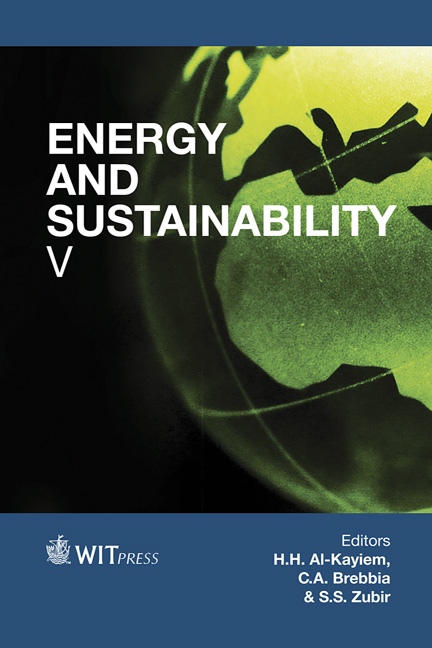Characterization Of Polycyclic Aromatic Hydrocarbons In Suspended Fine Particulate Matter Emitted From Rice Husk Burning Under Different Combustion Temperature Conditions
Price
Free (open access)
Transaction
Volume
186
Pages
12
Page Range
257 - 268
Published
2015
Size
600 kb
Paper DOI
10.2495/ESUS140221
Copyright
WIT Press
Author(s)
Q. Wang, K. Kobayashi, S. Lu, S. Itoh, D. Nakajima
Abstract
There exists large quantities of waste rice husk and around 3 million tons is estimated as biomass waste every year in Japan. Air pollutants emitted from exhaust gases of rice husk incineration lead to environmental damage, not only because of the influence on global environment and climate, when released into the atmosphere, but also on human health due to local air pollution. Therefore, it is necessary to effectively utilize waste rice husk to reduce air pollutants. In recent years, there is an increasing demand on the utilization of unused biomass instead of fossil oil fuel in combustors for farming-greenhouses heating during the winter season. With increasing demand will increase the running costs. In general, since these combustors are small scale in their sizes, there are lack of regulations or laws (e.g. the air pollution control act and the waste disposal and public cleaning law) in operation for their air pollution control. Although the small size combustors are characterized by their simplicity of structure and the low costs, however, they emit visible black carbon so-called elemental carbon as suspended fine particulate matter due to their poor combustion performance.
In this study, we investigated the possibility of the substitution of fossil fuel by waste rice husk in laboratory model combustion experiments. We evaluated the emission behavior of harmful air pollutants emitted from rice husk combustion by measuring carbonaceous and polycyclic aromatic hydrocarbons (PAHs) in suspended fine particulate matter caused from the exhaust gases. From the analytical results we found that particulate mass concentrations reducedsubstantially at high temperature combustion. The PAHtot (total 27 species) varied in the range 72.5–876 ng/g at different combustion temperature. PAHs emissions and molecular weight increased with combustion temperature rise. We firstly reported that the six ring PAHs (AA, DB(a,e)F, DB(a,l)P, DB(a,e)P, DB(a,i)P and DB(a,h)P) are discharged from biomass burning in different combustion temperatures using small size combustors. From the results of our study, it can be suggested that stable combustion performance under suitable conditions in order to control less air pollutants emitted from biomass fuel although small size combustors are still not regulated. However, it is very necessary to develop appropriate exhaust gas treatment technology for the small combustion equipment.
Keywords
rice husk, rice straw, small size combustor, combustion conditions, carbonaceous composition, polycyclic aromatic hydrocarbons





